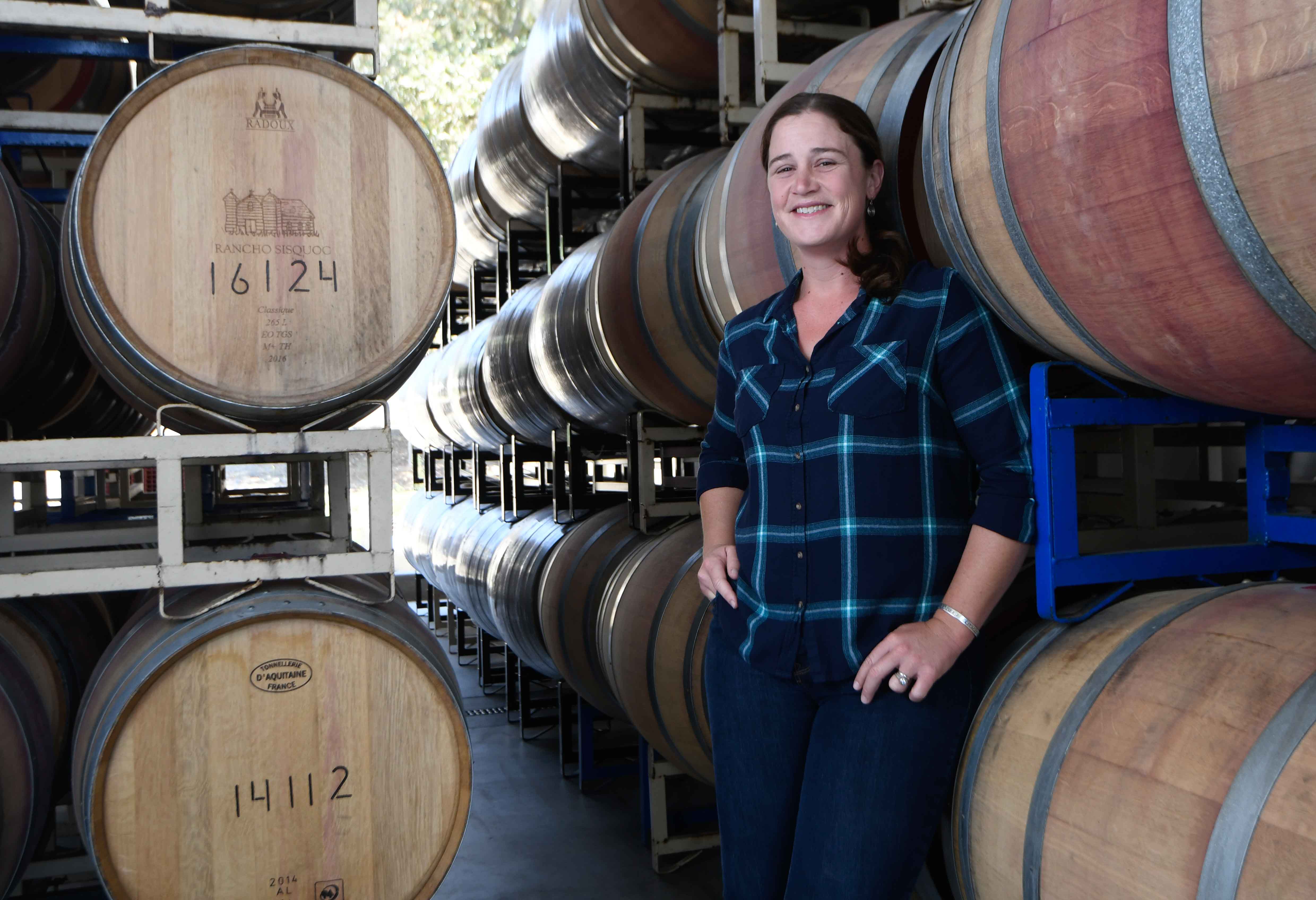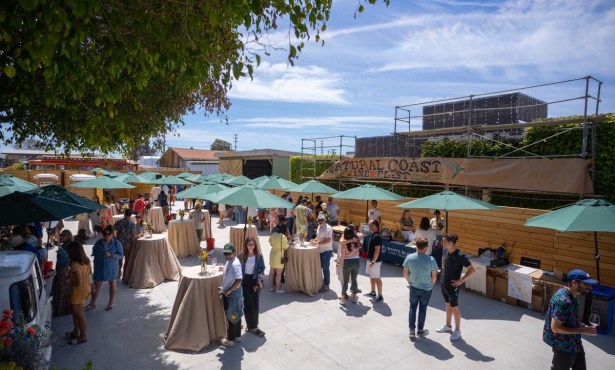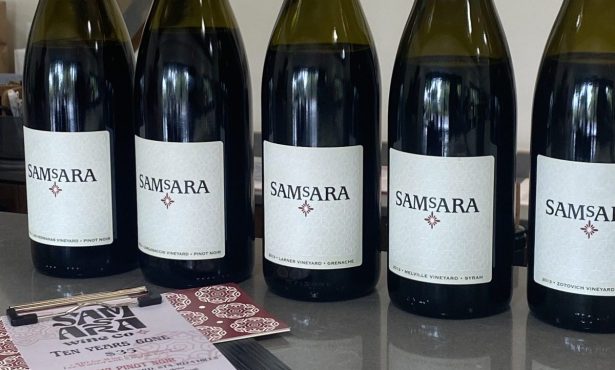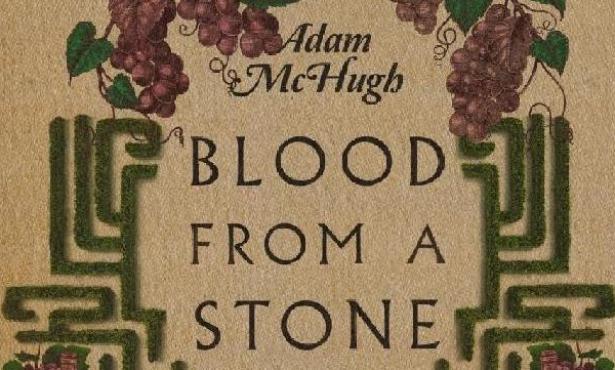Rancho Sisquoc’s End-of-the-World Wine
Winemaker Sarah Holt Mullins Works the Deepest Corners of the Santa Maria Valley

“This is the end of the world,” said Sarah Holt Mullins, looking up-canyon into the deepest recesses of the Santa Maria Valley. On our left, back toward the last specks of civilization, are rows of grapevines, part of Rancho Sisquoc’s Flood Family Vineyard, first planted 47 years ago. On our right, the Sisquoc River meanders out of the rugged, remote chaparral scrub and dense oak forests of the Los Padres National Forest.
“There’s a lot of bears up here,” explained Mullins, who grew up on the property, where her Missouri-raised dad became a tractor driver in the early 1970s while her mom hoed garbanzo beans. “They follow the pinot noir and can eat a whole row in one night.”
Such are the curious challenges of farming at the end of the developed world — don’t even ask about “la tigre blanca” — as well as having to use a huge army truck to get laborers across the river when the water is high. The once somewhat mighty, now much tamer Sisquoc cuts directly down the middle of this 37,000-acre property, a rectangle of about 12 by 5 miles, roughly from Foxen Canyon to Highway 166, buttressed by the San Rafael Mountains.
The 200-acre Flood Family and 100-acre McMurray vineyards sit on the opposite side of the river from the winery, tasting room (housed in the first winery), and surrounding homes, where Mullins lives. In high-water seasons, workers can camp on the vineyard side, and her parents were once stranded there while her mom was pregnant. They lived in a trailer next to the vineyard and survived for a while on peanut butter and crackers and fish they caught from the reservoir, which was first dammed in 1911.

The rancho was originally granted in 1845 by Pio Pico, the last governor of Alta California in Mexican times, and underwent a string of owners until being purchased in 1952 by the San Francisco–based Floods, who struck it rich in the Comstock Lode. They’ve run cattle ever since as well as numerous other farming and mining enterprises. The first vines were planted in 1972 by Harold Pfeiffer, the winery was bonded in 1977, and Mullins’s father, Ed Holt, was promoted to vineyard manager in 1987.
The glories of growing wine grapes in the Santa Maria Valley are well documented: With a wide mouth opening onto the cool Pacific, it stays quite cool in all seasons, with huge diurnal shifts in temperature, allowing grapes to ripen over a long season while retaining acidity. Rancho Sisquoc enjoys similar qualities, but because it is so far up the valley, it also gets more warm sunshine. That was apparent as we drove around the vineyard, for the fog bank was visible a couple of miles away, yet we were in the sun.
So rather than just the typical pinot noir and chardonnay grown throughout Santa Maria, Rancho Sisquoc is home to 14 different varieties: four whites, including one of only two plantings of sylvaner in California, and 10 reds, from pinot and syrah to sangiovese, nebbiolo, petite sirah, and all five Bordeaux varieties. Most of the grapes are sold, yet Mullins retains the most special, meticulously farmed blocks for the Rancho Sisquoc label.
Though she mostly loved growing up on the ranch, Mullins never expected to be a winemaker, and she escaped after high school to become a massage therapist. But she returned one year during the annual Santa Barbara County Vintners Association Harvest Festival to make some money washing windows, and then winemaker Alec Franks roped her into working harvest.
“It freaked me out, it was so difficult,” she recalled, but then the first fermentations kicked off and she was hooked. “That was 14 years ago. I fell in love that week. It just progressed from there.”
After working numerous jobs for the winery, she became winemaker in 2013 and now oversees about 18,000 cases of wine. She will probably be scaling that back a bit in the years to come and is dialing in on barrel selection, taking it from the 32 coopers that Franks used down to about 10. In my regular tastings of her wines over the past five years, they are steadily improving, quickly gaining a more consistent style and quality that reflect such an amazing place.
Mullins still loves living on the property with her husband and young daughter, despite being a half hour from town. “You have to love that journey to go get milk,” she said of what it takes to endure the country life. “We really can’t stop working, because we live here. It’s full-time, it’s constant, but it’s a great life. For crying out loud, we’re making wine. It could be worse.”
4·1·1 | Rancho Sisquoc hosts the 37th annual Santa Barbara Vintners Festival on Saturday, May 4, 1-4 p.m. (early entry at noon), with more than 70 wineries, as well as food, live music, demonstrations, and a silent auction. Tickets range from $25 (designated driver and children) to $100 (VIP), and there is a $50 Vintners Visa available that includes tastings at numerous wineries May 2-6. See sbvintnersweekend.com.





You must be logged in to post a comment.